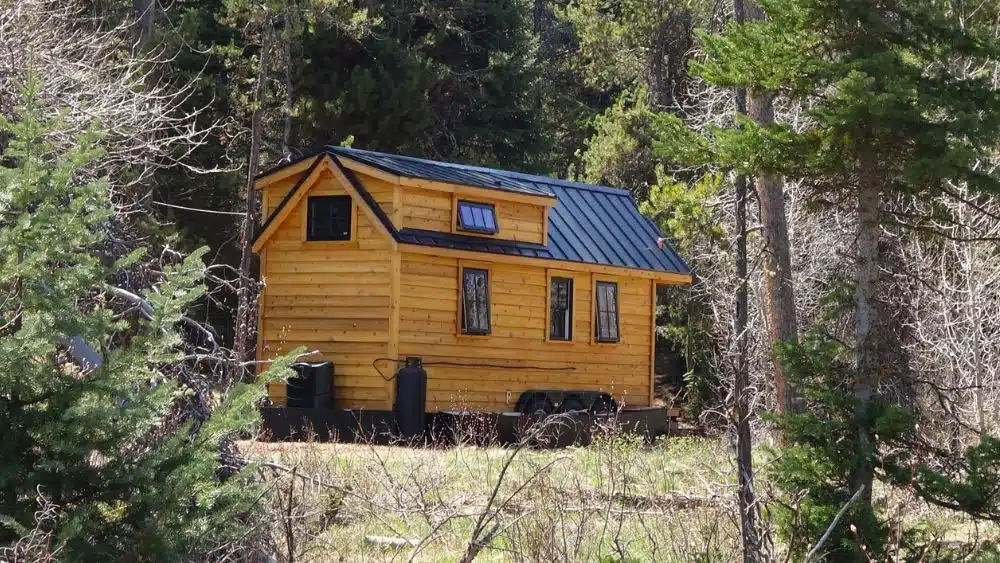
Ready to register, launch, and grow your own business? We have an easy-to-follow summary of 10 steps you will want to consider taking.
Home-based Business Owners Find a Tiny, Perfect Solution
Tiny homes are becoming ideal for Americans who want to scale back their lifestyles. We have an abundance of tiny home articles that can guide you through your home-buying journey. But these tiny gems are also gaining traction as the perfect headquarters for a home-based business.
To many Americans, being a business owner is alluring – and this is confirmed by the Small Business Association; there are just over 30 million small businesses from coast to coast. Homeowners know how to make their homes a comfortable haven, no matter the size. And tiny homeowners are innovative enough to find ways to designate a sliver of their dwelling to serve a business purpose.
Creating a business that you can operate from a tiny home is an exciting journey. Some launch a home-based business to fulfill a lifelong passion, discover a new career path, or create supplemental income.
Selecting your preferred business to launch is just the first step; you will have many other actions to take. To help you along your journey, we have created a helpful checklist so you will be better prepared to announce that moment when you are open for business.
1. Designate an Office Space
Perhaps you are fortunate enough to already own a tiny home, which is a great first step. If, however, you are in hot pursuit to find one that best fits your needs and budget, you can be on the lookout for one that will allow you to carve out adequate office space.
2. Make Sure there’s Parking
If you are the sole owner and operator, alternative parking slots may not be a problem. On the other hand, if you plan to hire administrative help, you will want to ensure you have adequate parking space. This may be tricky if you reside in a tiny home park, so learn the rules and regulations early in the process.
3. Decide on your Business Name
You may have settled on the best company name on the planet – in your humble opinion – and are convinced it will attract millions to your website. But before you pop the cork to celebrate with your friends in your tiny home, confirm that no one else has already registered that name with the state. You will simultaneously need to check domain sites to ensure you can secure the name for your website.
4. Make it Legal
The domain name you choose may or may not be identical to the one you want for your official business. Once you finalize the name, you will need to register the business with your state’s business division: you won’t want to overlook this. The Small Business Association’s website has a wealth of information on how to make your business a distinct legal entity – such as an LLC or corporation. Each state has its own specific filing fees for registering a company.
5. Remember your Favorite Uncle: Sam
You are in the business to make a profit – and after investing lots of time and energy, you hope it will be enough capital to help you build your brand. And the more profitable your business, the more resources you will have to purchase additional software or supplies – or redecorate your tiny home. As you manage your new income stream, there’s one payee you should never forget: the Internal Revenue Service (IRS). Consider this new venture in your life to be a real-life Monopoly game. As you earn money, there will always be expenses to pay – and the IRS will want their cut first.
Note: business owners must pay quarterly income taxes, not just on April 15 which is the deadline for individual income taxpayers.
6. Apply for an Employer Identification Number (EIN)
Just like you have a personal Social Security Number, your business will have its own tax identification number. An EIN is also known as a Federal Employer Identification Number (FEIN), or Federal Tax Identification Number (FTIN). Once you receive your unique number, it will be required on all tax documents, legal, and banking documents.
7. Secure your Internet
If your business depends heavily on your ability to connect across the digital universe, you should have a reliable – and secure – internet connection. If you plan to send or receive large files, this is a good time to talk to various providers to decide which plans will best suit your business needs.
8. Safeguard your Business
As a tiny homeowner, you already have a homeowners’ policy. Now you should purchase a policy to protect your business. After working diligently all day, you will sleep better in your tiny home, knowing that a business insurance policy will protect your company financially – in the event you have a covered loss.
9. Money in the Bank
Once you have established a business, registered it with the state, and secured an EIN, it’s time to build a banking relationship. Depending on your financial needs, you may want to ask for a line of credit. At the very least, you will want a checking and savings account, along with a debit and credit card. Another key point to remember – it’s imperative to keep your business and personal banking accounts separate.
10. Accurate Accounting
Certain tasks can and should be delegated to professionals to ensure you don’t miss out on capturing legitimate business deductions that may reduce your tax liability – and to confirm you are tax compliant. While you focus on marketing your business, having an accountant keep tabs on its internal operations may be wise. Since you have a home-based business, certain home expenses may be permitted as tax deductions on your tax return. An accountant can advise you on what is and is not eligible.
Performing these 10 steps may seem laborious but they will ensure you stay grounded as you form long-term business relationships and provide superior customer service. Taking a customized approach to building your tiny home business will help you personalize and shape it as it grows.

 10 Best State Parks in Utah
10 Best State Parks in Utah